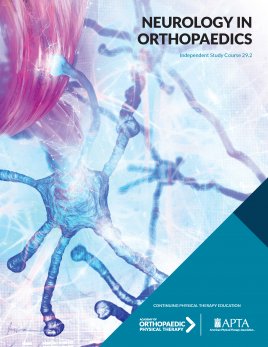
Neurology in Orthopaedics
| Online Only | |
|---|---|
| APTA Orthopedics Member | $65 |
| Non-APTA Orthopedics Member | $115 |
Note: CEUs are not offered for this course.
Course Description
This course will provide the reader with an appreciation of the influence of neurophysiology in the treatment of orthopaedic injuries. The theoretical basis of pain and neural adaptations are described in detail and emerging concepts are presented to apply to care. Specfic monographs are dedicated to the shoulder, ankle and knee, and lumbar regions as these areas often present with injuries that show a neurologic overlay. An application to evaluation and treatment is emphasized. Numerous case studies are used by the authors to assist in integrating knowledge.
Course Overview
Course Format: Online
Free Preview
Click here for a free preview of this course.
Course Objectives
- Understand the role of the central nervous system in the neural control of joint movement.
- Identify the central nervous system adaptations that may occur following musculoskeletal pain, including central sensitization.
- Develop treatment plans for patients with signs of reorganization in the neural control of movement.
- Understand the shoulder complex anatomy, biomechanics, and pathomechanics from a neurophysiological perspective.
- Understand the role of both joint mobility and stability in normal movement patterns of the shoulder complex.
- Select examination techniques to identify neurophysiological adaptive patterns of movement and develop rehabilitation strategies to address movement pattern dysfunction in the shoulder.
- Identify the structures and mechanisms that define knee joint stability.
- Identify common pathoanatomic diagnoses and suboptimal movement patterns associated with altered knee joint stability and mobility.
- Identify common patient-reported symptoms consistent with knee joint and limb instability.
- Describe a hierarchy of functional tests to assess knee joint stability and movement control.
- Design a progressive exercise program using principles of motor learning to improve knee joint stability of the knee.
- Describe key aspects of normal and abnormal biomechanics of the lumbar spine.
- Define stabilization and general muscle activation patterns involved with stabilization.
- Identify the general representation of patients with spinal instability and implement management strategies to improve dynamic spinal stability.
- Describe the burden, etiology, assessment, and conservative management of the foot and ankle following lateral ankle instability.
- Integrate neuromuscular concepts relating to the etiology, examination, and intervention of the ankle-foot complex in individuals with lateral ankle instability.
- Formulate an evaluation and rehabilitation plan for individuals with lateral ankle instability.
- Understand the prevalence and frequency of peripheral nerve entrapments of the lower extremity.
- Determine potential areas of entrapment of the peripheral nerves of the lower extremity based on anatomy.
- Differentiate peripheral nerve entrapments from other sources of pain through appropriate sensory and motor examinations.
- Implement neurodynamic movement tests and treatment to address peripheral nerve entrapment.
Topics and Authors
- Neurophysiology Underlying Muscle Function, Injury and Recovery and Treatment
Jean-Sebastien Roy, PT, PhD, Laurent J. Bouyer, PhD; Pierre Langevin, PT, MCISc - Joint Mobility and Stability Strategies for the Shoulder
Mary Insana Fisher, PT, PhD, OCS; J. Matthew Day, PT, PhD, OCS - Motor Learning Approaches to Joint Mobility and Stability Strategies for the Knee
Andrew D. Lynch, PT, PhD - Core Stabilization
Jeevan Pandya, PT, DPT, MHS, OCS, COMT, FAAOMPT - Joint Mobility and Stability Strategies for the Ankle
John J. Fraser, PT, DPT, PhD, OCS; Jay Hertel, PhD, ATC - Understanding Lower Extremity Tunnel Syndromes
Lindsay Carroll, PT, DPT, COS, OMPT; Benjamin R. Kivlan, PT, PhD, OCS, SCS; RobRoy Martin, PT, PhD, CSCS
Videos
Add To Cart
Which version of the course would you like to purchase?
Members Only
You need to be a member to buy this course.
Join today to enjoy exclusive deals and prices on all courses.
Join Now